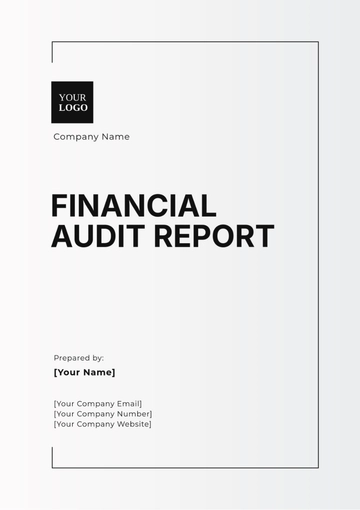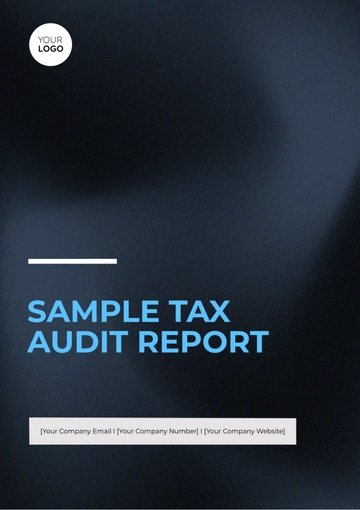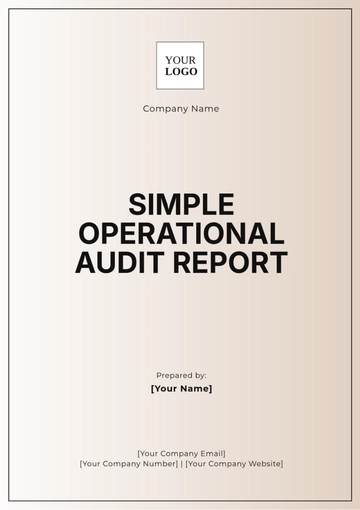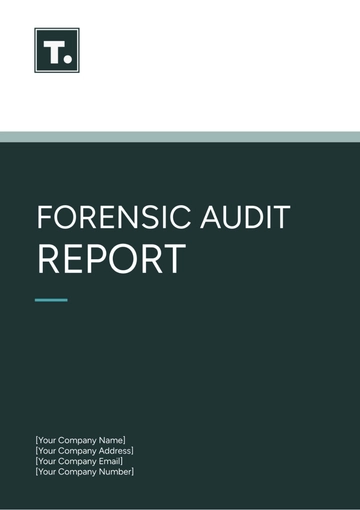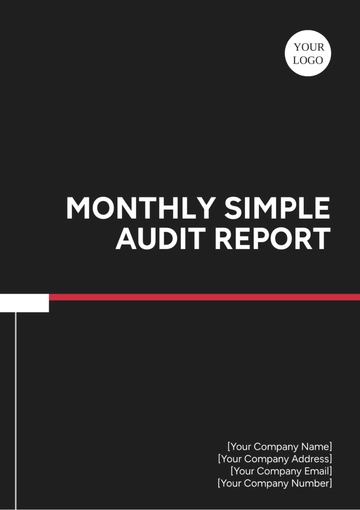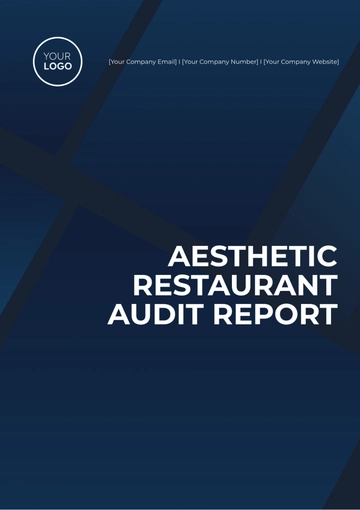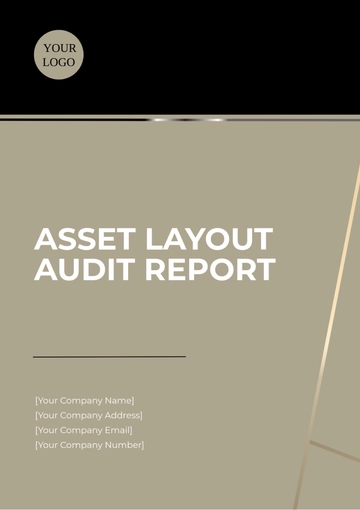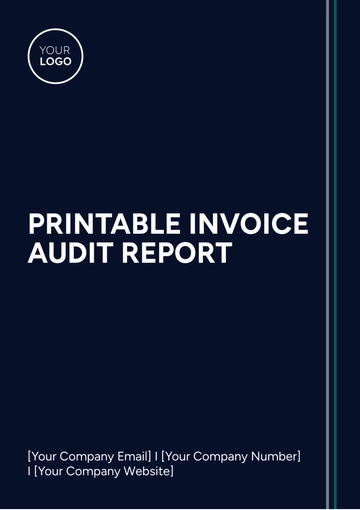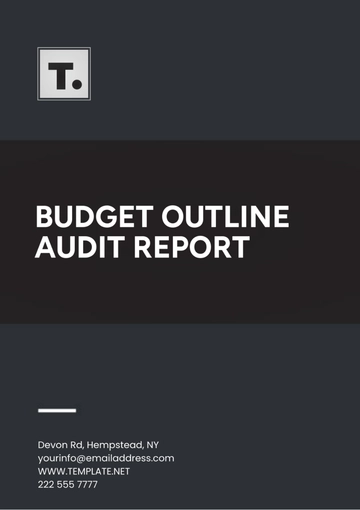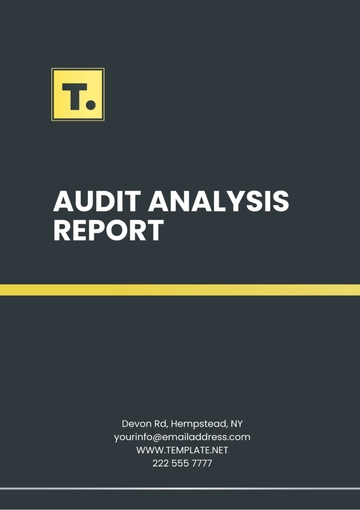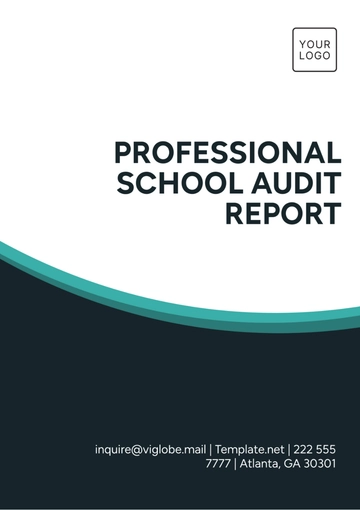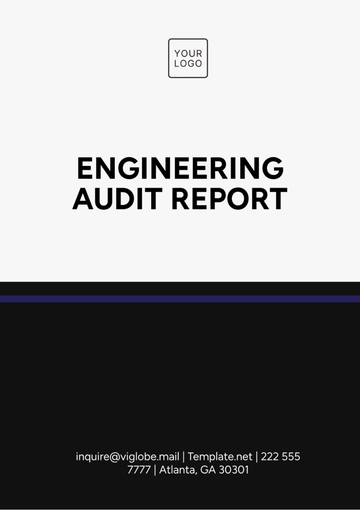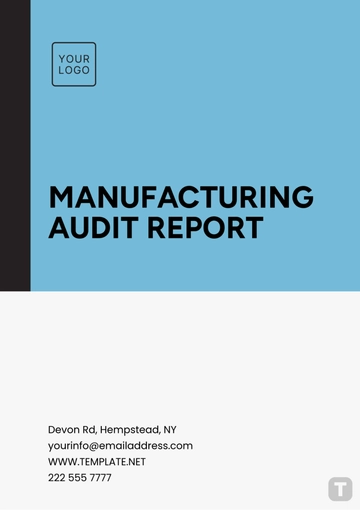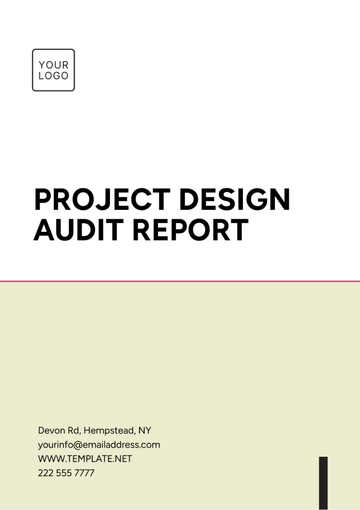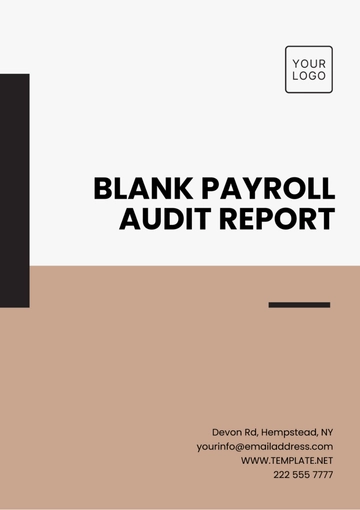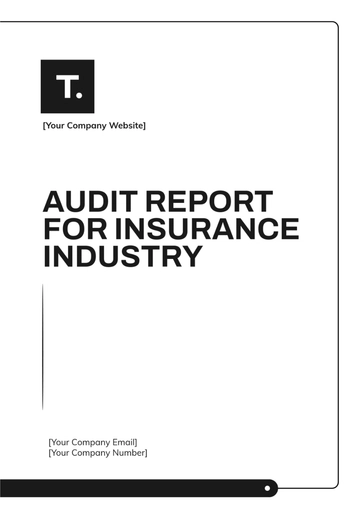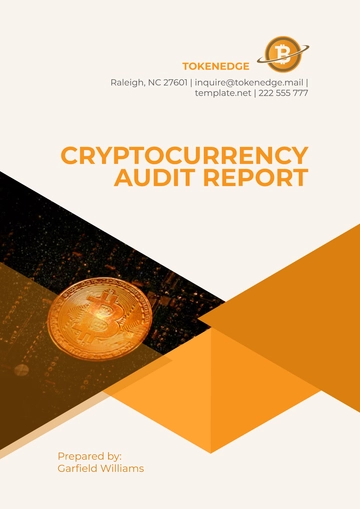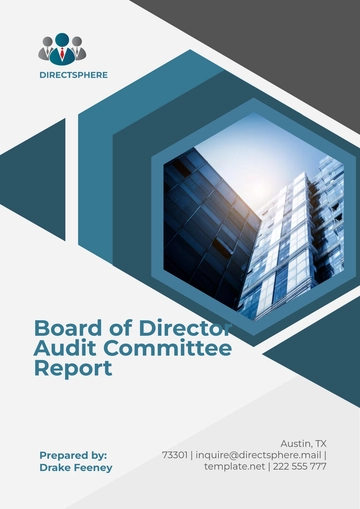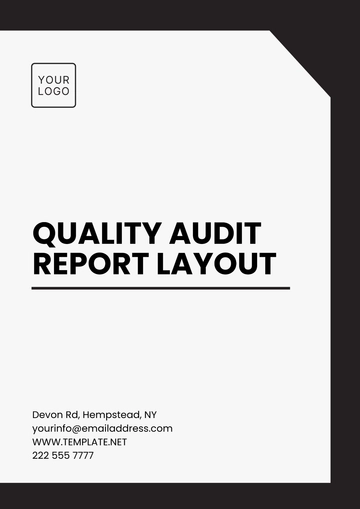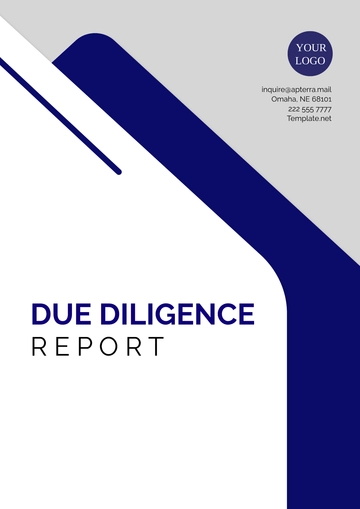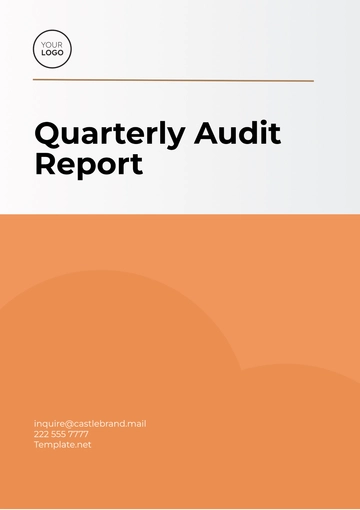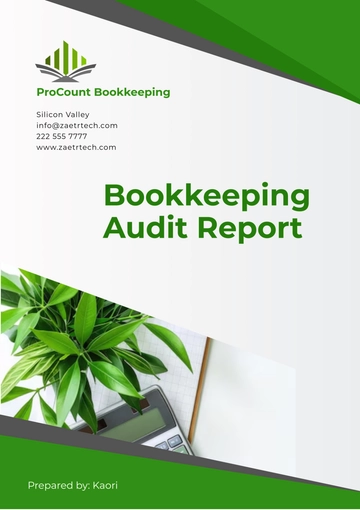Free Travel Agency Audit Report
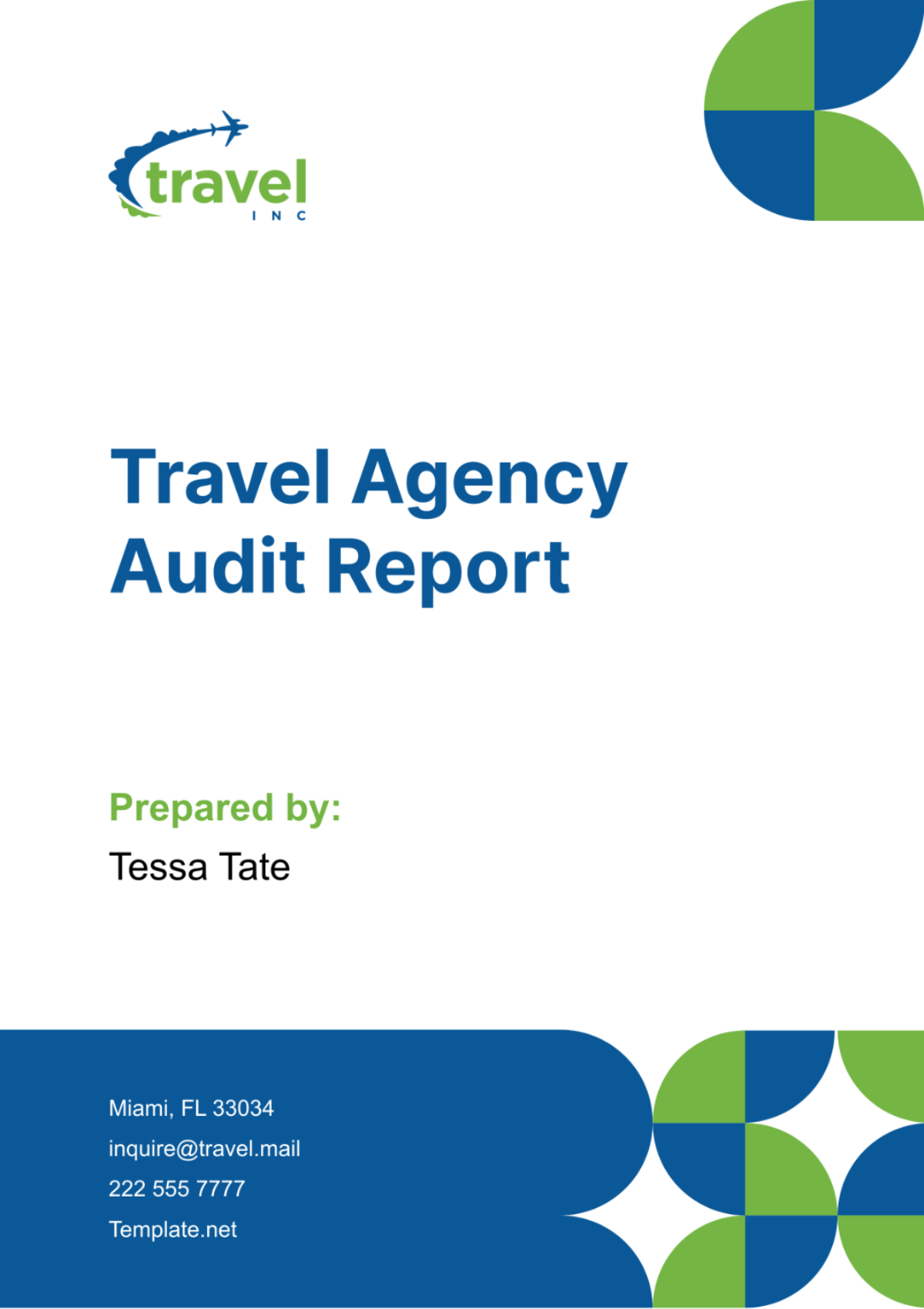
I. Executive Summary
A. Overview
Purpose of the Audit
The purpose of this audit conducted by [Your Company Name] is to comprehensively assess the performance, efficiency, and compliance of [Your Company Name]'s operations within the travel industry. By conducting this audit, [Your Company Name] aims to identify strengths and areas for improvement to enhance overall business effectiveness.
Scope of the Audit
The audit covers various critical aspects including revenue performance, customer satisfaction, operational efficiency, and compliance adherence of [Your Company Name]. This comprehensive evaluation ensures a thorough understanding of [Your Company Name]'s operational landscape and provides actionable insights for strategic decision-making.
Key Findings
Through meticulous analysis and evaluation, the audit has uncovered key findings that highlight [Your Company Name]'s successes and areas requiring attention. These findings serve as the foundation for the subsequent recommendations aimed at optimizing performance and ensuring sustainable growth.
Recommendations
Based on the identified findings, a series of targeted recommendations have been developed to guide [Your Company Name] towards achieving its business objectives. These recommendations encompass strategies to enhance revenue generation, elevate customer satisfaction, streamline operations, and strengthen compliance practices, positioning [Your Company Name] for long-term success and competitiveness.
B. Key Metrics
Revenue Performance
The audit meticulously examined [Your Company Name]'s revenue performance, analyzing sales figures, profit margins, and revenue streams. By assessing revenue trends and identifying sources of income, opportunities for revenue optimization and diversification have been identified.
Customer Satisfaction Ratings
Customer satisfaction levels were evaluated through a comprehensive review of feedback, surveys, and complaints. By understanding customer preferences and addressing pain points, [Your Company Name] can enhance customer loyalty and retention.
Operational Efficiency
The efficiency of [Your Company Name]'s operational processes and workflows was meticulously assessed to identify inefficiencies, bottlenecks, and opportunities for improvement. Streamlining operational procedures can improve productivity, reduce costs, and enhance overall organizational effectiveness.
Compliance Adherence
Adherence to regulatory requirements and industry standards was rigorously evaluated to ensure legal compliance and mitigate risks. Strengthening compliance practices ensures [Your Company Name]'s operations are conducted ethically, responsibly, and in accordance with applicable laws and regulations.
II. Introduction
A. Background of [Your Company Name]
History
[Your Company Name] was established [10] years ago, founded on the principles of providing exceptional travel services and experiences. Since its inception, [Your Company Name] has grown to become a trusted and reputable name in the travel industry, serving a diverse clientele with excellence and integrity.
Services Offered
[Your Company Name] offers a comprehensive suite of travel services tailored to meet the diverse needs and preferences of its clientele. From personalized vacation packages to corporate travel solutions, [Your Company Name] strives to deliver unparalleled service and value to its customers.
Target Market
[Your Company Name] caters to a broad spectrum of travelers, including leisure tourists, business travelers, families, and groups. With a customer-centric approach, [Your Company Name] seeks to provide tailored solutions that exceed expectations and create unforgettable travel experiences.
B. Purpose of the Audit
Objectives
The primary objectives of this audit are to evaluate the financial performance, customer service standards, operational efficiency, and compliance practices of [Your Company Name]. By conducting a comprehensive assessment, [Your Company Name] aims to identify areas of strength and opportunities for improvement to enhance overall business performance.
Importance
The findings of this audit are instrumental in guiding strategic decision-making and operational enhancements to drive sustainable growth and profitability for [Your Company Name]. By leveraging insights gained from the audit, [Your Company Name] can optimize its operations, elevate customer satisfaction, and maintain compliance with regulatory requirements, positioning itself for continued success in the competitive travel industry landscape.
III. Methodology
A. Data Collection
Interviews with Staff
Conducted structured interviews with [Your Company Name]'s management team, department heads, and frontline staff to gather insights into operational processes, challenges, and opportunities. Key topics discussed included customer interactions, workflow procedures, and compliance practices.
Analysis of Financial Records
Reviewed [Your Company Name]'s financial statements, including income statements, balance sheets, and cash flow statements, for the past three fiscal years. Analysis focused on identifying trends in revenue generation, cost structures, and profitability margins.
Review of Customer Feedback
Utilized qualitative and quantitative methods to analyze customer feedback data obtained from surveys, online reviews, and direct interactions. Common themes and sentiments were identified to assess overall satisfaction levels, identify areas of improvement, and understand customer preferences.
B. Evaluation Criteria
Revenue Generation
Assessed [Your Company Name]'s revenue generation strategies, including sales channels (online, offline), pricing structures, and revenue streams (airfare, accommodations, packages). Analysis included examination of revenue growth trends, market share, and contribution margins.
Customer Service Standards
Evaluated [Your Company Name]'s customer service standards based on response times, resolution rates, and customer feedback scores. Mystery shopping exercises and service quality assessments were conducted to measure service consistency and effectiveness.
Operational Procedures
Reviewed [Your Company Name]'s operational procedures and workflows, including booking processes, inventory management, and communication protocols. Process mapping and time-motion studies were utilized to identify bottlenecks, redundancies, and areas for optimization.
Compliance Adherence
Examined [Your Company Name]'s adherence to regulatory requirements, industry standards, and internal policies. Compliance assessments were conducted through document reviews, interviews with compliance officers, and observation of operational practices.
IV. Findings
A. Revenue Performance
Analysis of Sales Figures
Sales figures for the past three years indicate consistent growth, with an average annual increase of 10%. However, there was a notable decline in sales in [specific month/year], attributed to [reason such as economic downturn or external factors].
Comparison with Previous Periods
Revenue comparison with the previous year reveals a 15% increase in total sales, primarily driven by a surge in online bookings and upselling of ancillary services. However, there is room for improvement in other revenue streams such as corporate travel bookings and package deals.
Identification of Revenue Streams
[Your Company Name] generates revenue from multiple streams, including airfare bookings (60% of total revenue), hotel reservations (25%), tour packages (10%), and travel insurance (5%). Analysis indicates that online sales account for 70% of total revenue, highlighting the importance of digital platforms in revenue generation.
B. Customer Satisfaction
Analysis of Customer Feedback
Customer feedback analysis indicates a generally positive sentiment, with 85% of respondents expressing satisfaction with [Your Company Name]'s services. However, areas for improvement include response times for inquiries and the need for more personalized travel recommendations.
Review of Complaints and Resolutions
Complaint data reveals recurring issues related to flight delays, billing discrepancies, and communication breakdowns. The average resolution time for complaints is 5 days, falling short of the target of 3 days. Improvement is needed in proactive communication and timely issue resolution.
Suggestions for Improvement
Based on customer feedback and complaints, recommendations include implementing a customer relationship management (CRM) system for better tracking and management of customer interactions, providing additional training for frontline staff on conflict resolution and communication skills, and enhancing self-service options for customers to manage their bookings online.
C. Operational Efficiency
Assessment of Workflow Processes
Workflow analysis identified inefficiencies in the booking process, with manual data entry and multiple approval layers causing delays. Implementing an automated booking system and streamlining approval workflows can improve efficiency and reduce processing time by 20%.
Identification of Bottlenecks
Bottleneck analysis revealed congestion points in the customer service department, where high call volumes and long wait times lead to customer frustration. Increasing staffing levels during peak hours and implementing call routing technology can alleviate bottlenecks and improve service levels.
Recommendations for Streamlining Operations
Recommendations for improving operational efficiency include investing in technology solutions such as artificial intelligence (AI) for automated data processing, redesigning workflows to eliminate redundant steps, and cross-training employees to handle multiple tasks, reducing dependency on specialized roles.
D. Compliance Adherence
Review of Regulatory Requirements
[Your Company Name]'s compliance with regulatory requirements such as GDPR, PCI DSS, and FAA regulations was assessed. While overall compliance is satisfactory, there were instances of non-compliance with data protection regulations, necessitating updates to privacy policies and procedures.
Assessment of Compliance Measures
Internal compliance measures such as training programs, audits, and policy enforcement were found to be effective in promoting awareness and adherence to regulations. However, gaps exist in monitoring and enforcement, requiring stricter oversight and periodic reviews to ensure ongoing compliance.
Areas for Improvement
To ensure full compliance with regulatory standards, recommendations include conducting regular compliance audits by external auditors, providing ongoing training on regulatory changes and best practices, and enhancing documentation processes to demonstrate compliance efforts and accountability.
V. Recommendations
A. Revenue Enhancement Strategies
Marketing Initiatives
Launch targeted marketing campaigns to promote lesser-known travel destinations and niche travel experiences.
Collaborate with influencers and travel bloggers to increase brand visibility and attract new customer segments.
Offer exclusive discounts and promotions to incentivize repeat bookings and referrals.
Diversification of Services
Expand the range of travel services offered to include niche markets such as adventure travel, eco-tourism, and wellness retreats.
Partner with local vendors and tour operators to offer unique, curated experiences tailored to specific customer interests.
Introduce subscription-based travel packages for frequent travelers, providing discounted rates and exclusive perks.
Pricing Adjustments
Conduct a comprehensive pricing analysis to ensure competitiveness in the market while maintaining profitability.
Implement dynamic pricing strategies to optimize revenue based on demand fluctuations and seasonal trends.
Offer flexible payment options such as installment plans and loyalty rewards to attract budget-conscious travelers.
B. Customer Service Improvements
Training Programs for Staff
Provide ongoing training and development opportunities for customer service representatives to enhance communication skills, problem-solving abilities, and product knowledge.
Implement empathy training to improve understanding and empathy towards customer needs and concerns.
Conduct regular role-playing exercises and scenario-based training to simulate real-life customer interactions and improve response times.
Implementation of Customer Feedback Mechanisms
Establish a dedicated feedback system, including surveys, online reviews, and social media monitoring, to gather customer insights and measure satisfaction levels.
Implement a proactive approach to address customer feedback promptly, acknowledging concerns and providing timely resolutions.
Encourage customer engagement through loyalty programs, feedback incentives, and personalized follow-up communications.
Enhancements to Reservation Systems
Invest in upgrading reservation systems and online booking platforms to improve user experience and streamline the booking process.
Implement chatbots and AI-driven virtual assistants to provide instant assistance and support to customers, reducing wait times and improving accessibility.
Integrate customer relationship management (CRM) software to centralize customer data and facilitate personalized interactions and targeted marketing campaigns.
C. Operational Enhancements
Automation of Manual Processes
Identify repetitive and time-consuming tasks within operational workflows and automate them using workflow automation tools and software.
Implement electronic document management systems to digitize paper-based processes and improve document retrieval and storage efficiency.
Streamline inventory management processes by adopting inventory management software and barcode scanning technology to track and manage inventory levels in real-time.
Upgradation of IT Infrastructure
Upgrade IT infrastructure and hardware to support the growing demands of digital operations, including faster internet connectivity, cloud-based servers, and cybersecurity measures.
Implement robust data backup and disaster recovery solutions to minimize downtime and ensure data integrity in the event of system failures or security breaches.
Invest in mobile technology solutions to empower staff with remote access to critical systems and data, enabling flexibility and productivity in a mobile workforce environment.
Streamlining Customer Service Processes
Implement a centralized customer service platform to streamline communication channels and provide a unified view of customer interactions across all touchpoints.
Integrate customer support tools such as ticketing systems and live chat features to facilitate efficient issue resolution and customer engagement.
Develop self-service options such as FAQ databases, knowledge bases, and tutorials to empower customers to find solutions to common queries independently.
VI. Conclusion
A. Summary of Key Findings
The audit identified areas of strength and opportunities for improvement across revenue generation, customer service, operations, and compliance.
Recommendations have been developed to address key findings and enhance [Your Company Name]'s overall performance and competitiveness in the travel industry.
B. Action Plan for Implementation
Develop a detailed action plan outlining specific tasks, timelines, and responsible parties for implementing the recommended strategies and initiatives.
Prioritize action items based on urgency and potential impact, allocating resources and budget accordingly.
Establish key performance indicators (KPIs) and metrics to measure progress and track the effectiveness of implemented initiatives.
C. Future Outlook
With the implementation of the recommended strategies and initiatives, [Your Company Name] is well-positioned to strengthen its market presence, drive revenue growth, and enhance customer satisfaction.
Continuous monitoring, evaluation, and adaptation will be essential to maintain agility and responsiveness to changing market dynamics and customer preferences.
- 100% Customizable, free editor
- Access 1 Million+ Templates, photo’s & graphics
- Download or share as a template
- Click and replace photos, graphics, text, backgrounds
- Resize, crop, AI write & more
- Access advanced editor
Ensure compliance and transparency with Template.net's Travel Agency Audit Report Template. This customizable document provides a structured format for detailing the results of internal or external audits conducted on your agency's financial records, processes, and controls. With clear sections for audit findings, recommendations, and management responses, it helps demonstrate accountability and improve operational efficiency. Editable in our Ai Editor Tool for seamless customization and integration into your agency's audit documentation.
You may also like
- Sales Report
- Daily Report
- Project Report
- Business Report
- Weekly Report
- Incident Report
- Annual Report
- Report Layout
- Report Design
- Progress Report
- Marketing Report
- Company Report
- Monthly Report
- Audit Report
- Status Report
- School Report
- Reports Hr
- Management Report
- Project Status Report
- Handover Report
- Health And Safety Report
- Restaurant Report
- Construction Report
- Research Report
- Evaluation Report
- Investigation Report
- Employee Report
- Advertising Report
- Weekly Status Report
- Project Management Report
- Finance Report
- Service Report
- Technical Report
- Meeting Report
- Quarterly Report
- Inspection Report
- Medical Report
- Test Report
- Summary Report
- Inventory Report
- Valuation Report
- Operations Report
- Payroll Report
- Training Report
- Job Report
- Case Report
- Performance Report
- Board Report
- Internal Audit Report
- Student Report
- Monthly Management Report
- Small Business Report
- Accident Report
- Call Center Report
- Activity Report
- IT and Software Report
- Internship Report
- Visit Report
- Product Report
- Book Report
- Property Report
- Recruitment Report
- University Report
- Event Report
- SEO Report
- Conference Report
- Narrative Report
- Nursing Home Report
- Preschool Report
- Call Report
- Customer Report
- Employee Incident Report
- Accomplishment Report
- Social Media Report
- Work From Home Report
- Security Report
- Damage Report
- Quality Report
- Internal Report
- Nurse Report
- Real Estate Report
- Hotel Report
- Equipment Report
- Credit Report
- Field Report
- Non Profit Report
- Maintenance Report
- News Report
- Survey Report
- Executive Report
- Law Firm Report
- Advertising Agency Report
- Interior Design Report
- Travel Agency Report
- Stock Report
- Salon Report
- Bug Report
- Workplace Report
- Action Report
- Investor Report
- Cleaning Services Report
- Consulting Report
- Freelancer Report
- Site Visit Report
- Trip Report
- Classroom Observation Report
- Vehicle Report
- Final Report
- Software Report

